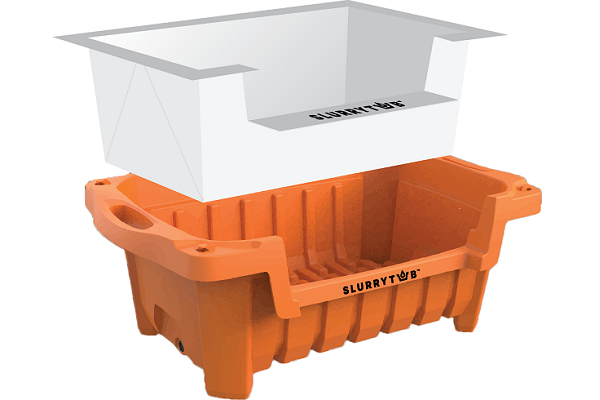SLURRYTUB makes clean-up much easier

After a big day on site, there’s nothing worse than the slurry clean-up and dry cement can often end up on the lawn, in the garden or leaking onto roads and footpaths. In light of this, the SLURRYTUB has been invented, a sustainable solution for water-saturated site waste.
Essentially a portable filtering system, SLURRYTUB prevents slurry from getting washed down drains or left to ruin lawns and gardens when tradies and DIYers take clean-up shortcuts. Both practical and cost-effective, it helps protect the environment and stormwater infrastructure.
The idea of the SLURRYTUB came as a Sydney builder wanted a better way to wash up waste on building sites. He realised that the industry guidelines for disposing of slurry were impractical and often ignored.
It features a recyclable polypropylene tub that’s cut out at the front to support most wheelbarrows hands-free. Inside is a single-use biodegradable filter that traps the concrete slurry, leaving the sediment-free water to drain into the desired spot.
“It’s as simple as the three Ds: drain, dry and dispose,” SLURRYTUB chief executive David Flintoff says.
“And it can all be done in less than 30 minutes.”
Already proving a hit, SLURRYTUB has been successfully trialled by the Council of the City of Sydney, which awarded an Innovation Grant for Environmental Performance 2019/2020 to conduct trials on sites around the city.
More than 30 individual building sites have since tested its performance.
Significantly, SLURRYTUB has been certified by Good Environmental Choice Australia (GECA), an eco-label that provides an independent ‘tick’ to show that the product is great for the environment, lowers the impact on human health and has been ethically made. GECA’s goal is to empower architects, builders, designers and consumers to have confidence in their purchasing decisions. Their rigorous standards follow ISO 14024 principles and ISEAL frameworks
“GECA’s certification is a weighty endorsement for SLURRYTUB’s sustainability credentials, proving that this clean, simple system contributes to the environmental performance of building sites and overall stormwater quality,” David says.
